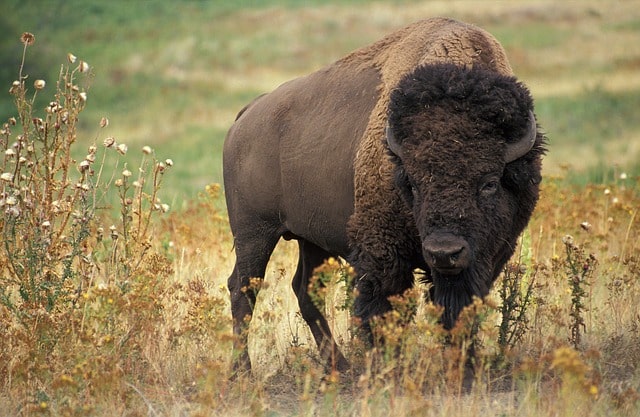
The bison is a ruminant bovid.
Bison characteristics
It is important to mention that bovids are also ruminants and mammals . This means that, being a ruminant, the bison ruminates (chews food a second time after eating it) and has a stomach divided into four cavities. On the other hand, like the rest of the mammals, their embryos develop inside the mother's breast and the offspring are fed with the milk secreted by the females' breasts.
The bison resembles the bull . A rough coat covers its body, the upper sector of which is characterized by being bulky.
It is possible to distinguish between two species of bison: the American bison , also called buffalo (scientific name Bison bison ); and the European bison ( Bison bonasus ). The American bison is usually heavier and hairier, but with less hair on its tail and shorter legs.
From the American bison, meanwhile, two subspecies emerged. One of them is the American wood bison or mountain bison ( Bison bison athabascae ) and the other, the American plains bison ( Bison bison bison ). The European bison subspecies, on the other hand, are already extinct. These were the Caucasian bison ( Bison bonasus caucasicus ) and the Carpathian bison ( Bison bonasus hungarorum ).
The buffalo or cibolo
The American bison , buffalo or cibolo lives in the plains of Canada , the United States and Mexico . Females and males have small, curved horns and lighter fur in the summer than in the winter.
It is estimated that, at the beginning of the 18th century , there were more than thirty million American bison. Nearly a hundred years later, the population was reduced to about a thousand animals due to hunting and the destruction of their habitat, among other factors. Over time , thanks to the work of specialists, the number of bison was raised to approximately 350,000.

Bison are currently raised for their meat.
The European bison
As we indicated above, the American bison lives on plains , preferring open spaces. The European bison , on the other hand, opts for forested areas.
The species usually feeds on branches, bark and leaves, with a predilection for ash trees. These animals move in herds, and can form groups of around twenty individuals.
Link with the human being
Bison hunting began in ancient times. People have not only taken advantage of meat as food, but also the skin of this ruminant was very important as shelter.
For all the needs that they managed to satisfy with the animal, different native peoples of North America revered the bison. Their hunting, in this framework, was almost a ritual due to respect for the specimens.
Today, bison are raised to obtain their meat , which has a lower level of cholesterol and fat compared to beef. It is usually cooked for a long time over low heat.
